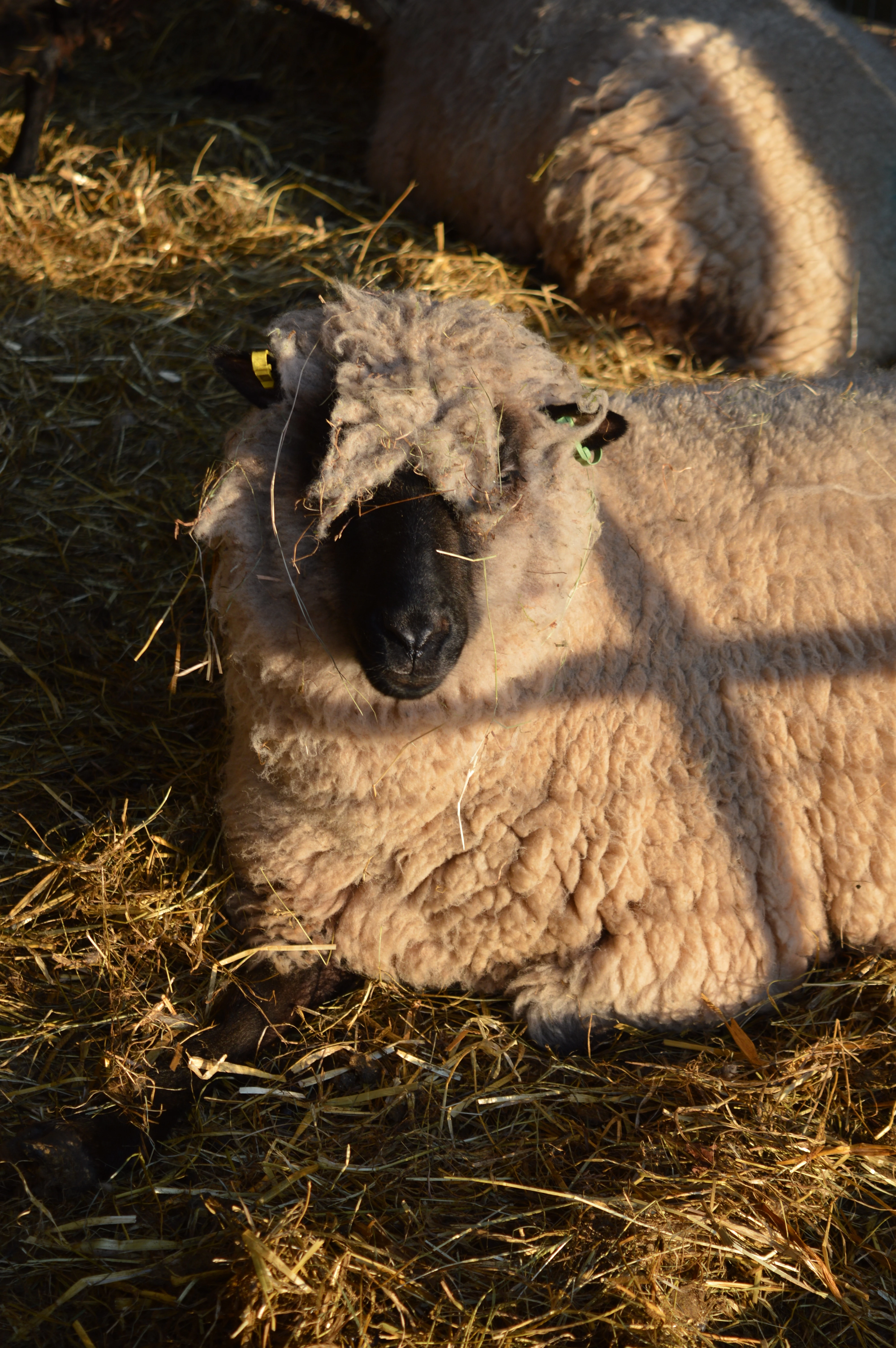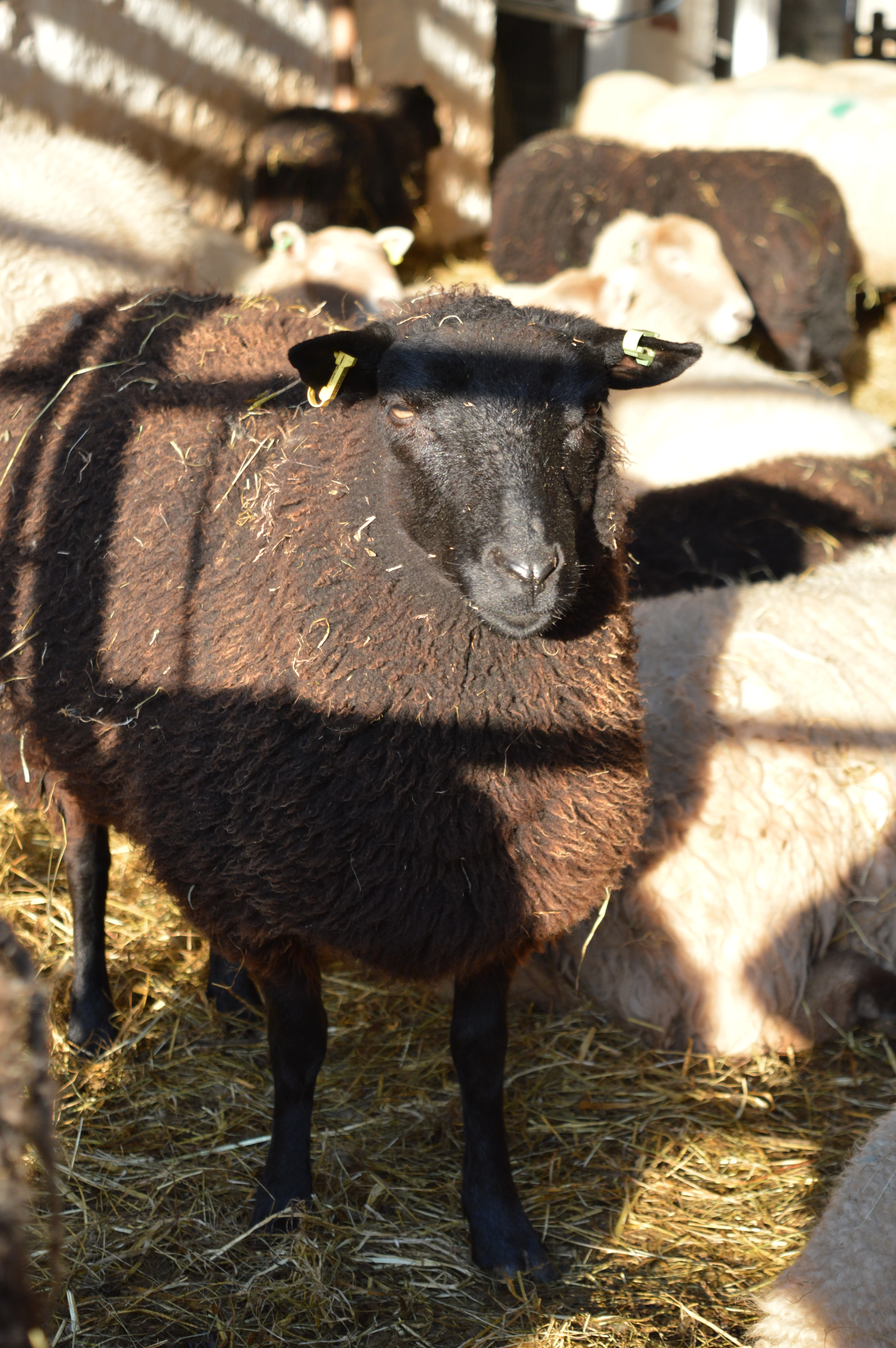rare breeds at St Fagans
, 17 February 2015
We have three types of sheep at St Fagans, and they are all on the Rare Breed List:
rare breed:
noun: rare breed
A breed of livestock or poultry that is not associated with large-scale commercial farming, typically one that has traditionally been reared in a particular region.
Source: Oxford Dictionaries
Traditional breeds won’t give you the best, or fastest return on your money, unlike modern commercial animals, but they may have characteristics which make them better suited to specific local circumstances, like hardiness, disease resistance or a willingness to work harder to find food! Each breed might not offer the complete package to a modern farmer, but they are part of the library of genetic material that we need to protect to ensure a sustainable future for Welsh farming.
So if you’re in the mood for some sheep facts – you’ve come to the right place!
Eyes down for a game of Rare Breed Bingo…
Hill Radnor (listed as ‘at risk’)
A rare breed Hill Radnor sheep at St Fagans
Developed over the years to suit the Radnor Hills and is probably typical of the old Welsh tan-faced sheep that used to roam the hills. Reference was being made to the breed as far back as 1911 and a Breed Society was formed in 1949. The breed remains very much confined to the Radnor/Brecon area of Wales and there are very few flocks in the rest of the U.K.
Key Characteristics:
Size: Medium ewes- 50-55kg, rams- 70-80kg
Looks: A hill breed but larger and bulkier than a Welsh Mountain.Thick white fleece and a distinctive tan face with an aquiline nose. Ewes are polled, rams are horned.
Hardiness: The breed is hardy and is well suited to life on the hills. Can do well on limited forage.
Llanwenog (listed as a ‘minority breed’)
A rare breed Llanwenog sheep at St Fagans
Derived from the cross of the Shropshire with various local black faced hill breeds in the Teifi valley in West Wales in the late 19th century. The Llanwenog Breed Society was formed in 1957. The breed is still centred in West Wales but has spread throughout the UK. Particular value is placed on its ability to survive in harsh upland areas as well as to make the best use of richer lowland pastures.
Key Characteristics:
Size: Medium - ewes- 55-60kg, rams- 80-90kg
Looks: A well balanced sheep with a thick white fleece and characteristic tuft or topknot above the head. The head and ears are black.
Hardiness: The Llanwenog retains some of the hardiness from its hill breed ancestors but is more suited to lowland grazing.
Black Welsh Mountain (listed as a ‘success story’ hooray!!!)
A rare breed Welsh Black sheep at St Fagans
A distinct colour variation of the Welsh Mountain which occurred from time to time in white Welsh Mountain flocks for centuries. In 1920 a Black Welsh Mountain Society was founded to register the breed as separate from the white Welsh Mountain. The Black Welsh Mountain is the only completely black breed of sheep found in the UK.
Key Characteristics:
Size: Small- ewes- 45kg, rams- 60-65kg
Looks: To conform to the breed standard a sheep must be black all over. A small, slender sheep although not as thin looking as a primitive breed. Ewes are polled, rams are horned.
Hardiness: Can survive on upland grazing where other breeds would struggle and similarly to other Welsh Mountain varieties, the breed will thrive when brought onto richer lowland grazing.
(information supplied by kind permission of the Rare Breeds Survival Trust)




Comments - (2)
Yes - about a third of the flock are Radnors